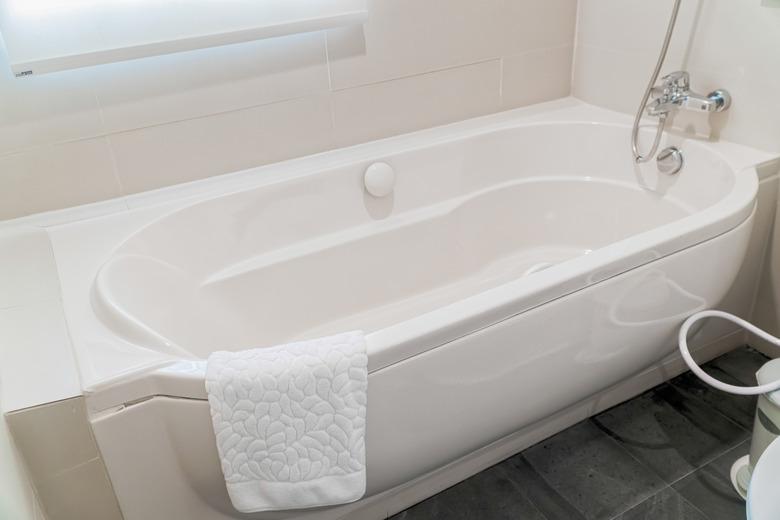Does Bleach Hurt A Bathtub?
Does bleach hurt a bathtub if you use it for cleaning? It's important to know the answer before you tackle the body oils, skin particles, hair and dirt, in addition to the natural buildup of soap and mineral deposits, that often collect on your tub. From time to time, your bathtub can benefit from a good cleaning and disinfection. Bleach makes a powerful disinfectant, but if you don't use it properly, it can damage or discolor your bathtub surface.
Tip
Bleach is a potent disinfectant, but you must use it properly or it may damage or discolor the finish of your bathtub.
Precautions for Using Bleach
Bleach is highly corrosive, so it's always important to use it with caution. It can do more damage to your skin than it can do to your bathtub, so always wear rubber gloves and eye protection when working with household bleach. Keep your bathroom well ventilated when working with bleach and avoid breathing the fumes. Never combine bleach with other cleaners as the combination can cause toxic gases.
A white bathtub can benefit from the occasional bleach treatment, but always use it in moderation. Simply pouring undiluted bleach directly onto the bathtub surface may cause the porcelain or other material to become permanently discolored. Bleach has enough strength to work even with heavy dilution, so it's always best to mix it with water for a diluted cleaning solution that's safer to use.
Move your shower curtain, rugs, towels and other items away from the bathtub before using the bleach. One stray drop can discolor any fabrics in your bathroom.
When Not to Bleach
In some cases, you should avoid bleach in a bathtub altogether. If you have colored tiles and colored grout inside your bathtub, or if the tub itself is pigmented with colors other than white, chlorine bleach may cause the pigments to permanently fade, even when heavily diluted.
For any colored bathtub surface, use oxygen bleach instead. Oxygen bleach uses peroxide and soda ash to disinfect, and does not cause colors to fade. It can be just as effective in cleaning as traditional chlorine bleach with less risk for damage, but you still need to use caution when cleaning with oxygen bleach.
Use bleach sparingly no matter what type you use. Bleaching your bathtub frequently could cause corrosion over time, especially on acrylic and enamel-coated tubs.
Methods of Bleaching
Your ideal technique for using bleach in a bathtub will depend on the type of problem that you hope to resolve. For example, if you just want to remove a particularly difficult stain at the bottom of the tub, dampen a paper towel with bleach and set it atop the stained area until the stain fades. If necessary, add more bleach as the paper towel dries. After removing the paper towel, rinse the tub with water.
To disinfect the entire tub, mix half bleach and half water in a spray bottle and spray the tub surface. Scrub with a firm brush and rinse with hot water. You can also make the diluted bleach mixture in a bucket and use a sponge to wipe down surfaces.
Bleach in a Bathtub Alternatives
If you wish to avoid bleach in a bathtub altogether, try treating the tub with grapefruit and salt. The salt contains chloride, one of the ingredients in the bleach compound, and grapefruit contains citric acid, which also cleans and disinfects. Cut the grapefruit in half, sprinkle salt over it and scrub your entire tub to clean and disinfect. Rinse with water and call it a day.
Baking soda and vinegar can also create a powerful combo that can clean your tub. It creates a bubbly reaction to help clean. Baking soda mixed with a little water can work as a safe scouring product to clean your bathtub.
